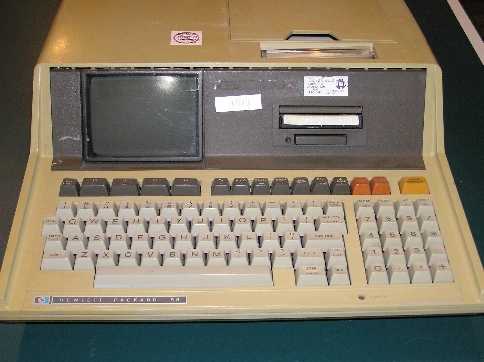





|
NAME |
HP-85 |
|
MANUFACTURER |
Hewlett Packard |
|
TYPE |
Professional Computer |
|
ORIGIN |
U.S.A. |
|
YEAR |
1980 |
|
END OF PRODUCTION |
1984 |
|
BUILT IN LANGUAGE |
HP Basic interpreter |
|
KEYBOARD |
Full stroke 93 keys with numeric keypad and user definable keys |
|
CPU |
'Capricorn' custom HP 8-bit CPU |
|
SPEED |
0.625 MHz |
|
COPROCESSOR |
Custom HP I/O circuits |
|
RAM |
16 KB (14.5 KB for the user, expandable to 32 KB) |
|
VRAM |
8 KB |
|
ROM |
32 KB |
|
TEXT MODES |
32 chars x 16 lines |
|
GRAPHIC MODES |
256 x 192 dots |
|
COLORS |
Monochrome |
|
SOUND |
Tone Generator |
|
I/O PORTS |
Four I/O Ports |
|
BUILT IN MEDIA |
Built-in DC 100 cartridge drive |
|
OS |
Built-in BASIC language. Optional CP/M O.S. with external FD/HD unit |
|
POWER SUPPLY |
Built-in power supply unit 110V - 240V switchable |
|
PERIPHERALS |
Various extension cards: GP-IB, Serial, FDD controller, I/O routines, Parallel, BASIC extensions |
|
HP-85
|
|
HP-85 |
|
The display offered a full screen editor and a ROLL key allowing to scroll the screen window up and down through a 48
line (three full screens) buffer.
|
